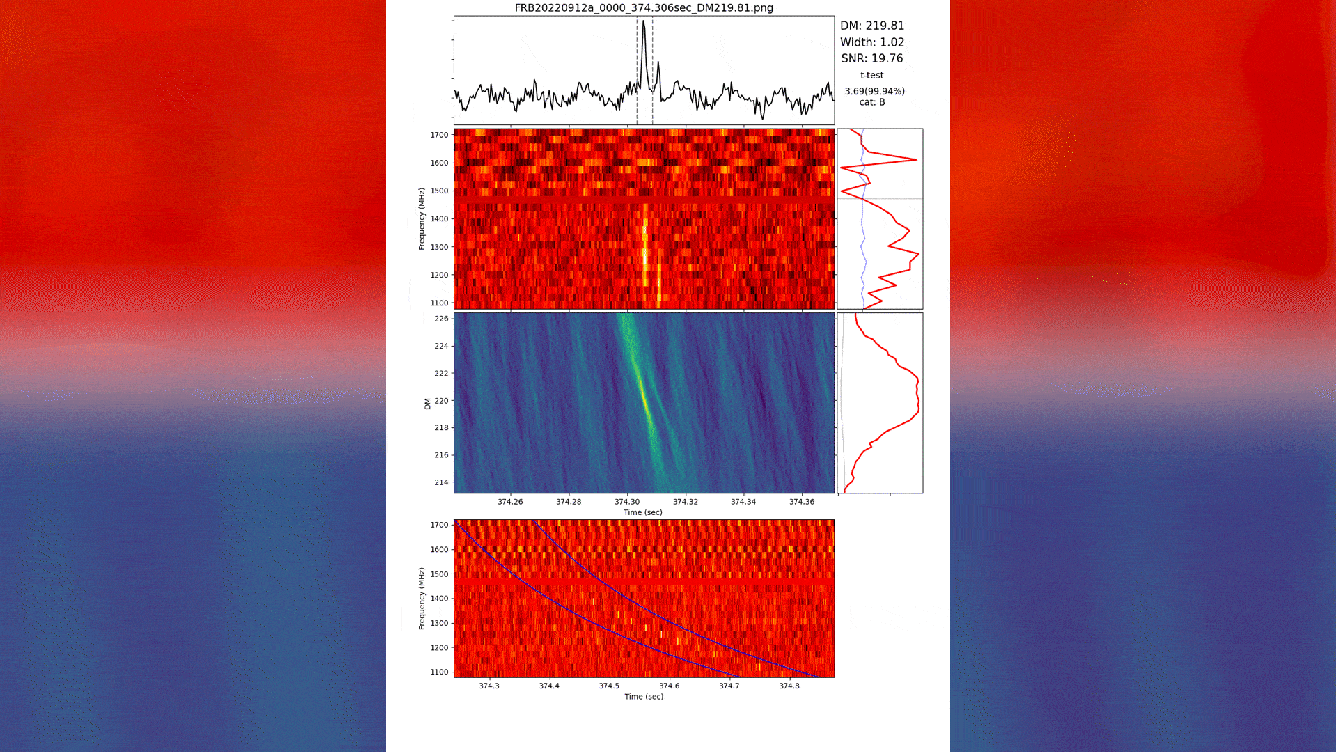A Cosmic Phenomenon Unveiled
An international astronomy team is abuzz with the detection of a unique radio signal, an FRB, a fleeting yet brilliant flash of radio light from an unknown corner of the cosmos.
James Webb Telescope: A Supernova Prelude
The magnificent WR 124, captured by the James Webb Space Telescope, shines a beacon on the prelude to a supernova.
The signal, an FRB, emerges as a few milliseconds of bright radio light from an origin point outside our galaxy. It’s a cosmic clue to the unfathomed depths of space.

(Sofia Z. Sheikh / SETI Institute)
FRBs: A Pattern Like No Other
For the first time, a repeating FRB shows an anomalous pitch shift, a finding that has astronomers reeling. “This work is exciting because it provides both confirmation of known FRB properties and the discovery of some new ones,” stated SETI Institute’s Sofia Sheikh, the study’s lead author.
A Sound from the Stars
Over two months, the team tracked 35 bursts from a single source, revealing a pattern unlike any heard before—a cosmic slide-whistle captured using a xylophone to translate the data into sound.
Listen to the Universe
Inviting the public to experience this phenomenon, the SETI Institute offers an auditory glimpse into the enigmatic sounds of the universe.
Deciphering the Cosmic Notes
Beginning with high pitches and descending to the lowest tones, the FRB echoes like a xylophone’s scale, providing auditory insight into the structure of these bursts.
Theories Abound
Astronomers hypothesize that magnetars, neutron stars with intense magnetic fields, could be the FRBs’ progenitors.
Sheikh elaborates, “We’re narrowing down the source of FRBs, for example, to extreme objects such as magnetars, but no existing model can explain all of the properties that have been observed so far.”
As theories evolve, the collision of neutron stars and the merging of white dwarfs remain viable origins for FRBs. This research marks a leap towards demystifying these celestial signals, which radiate in a millisecond as much energy as the Sun emits in a year.



